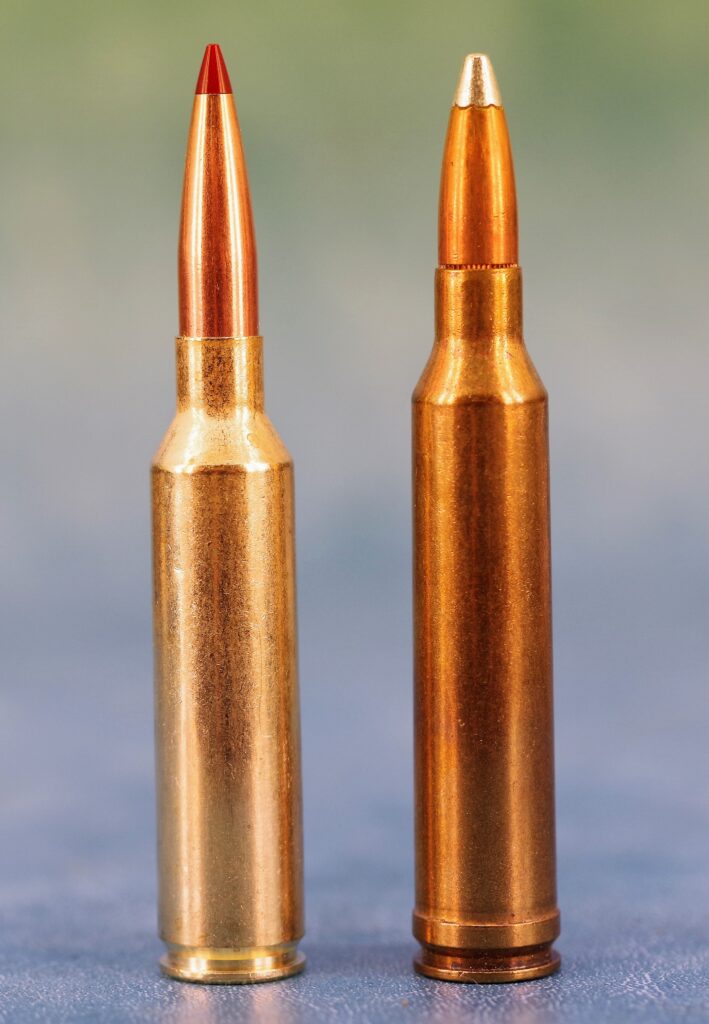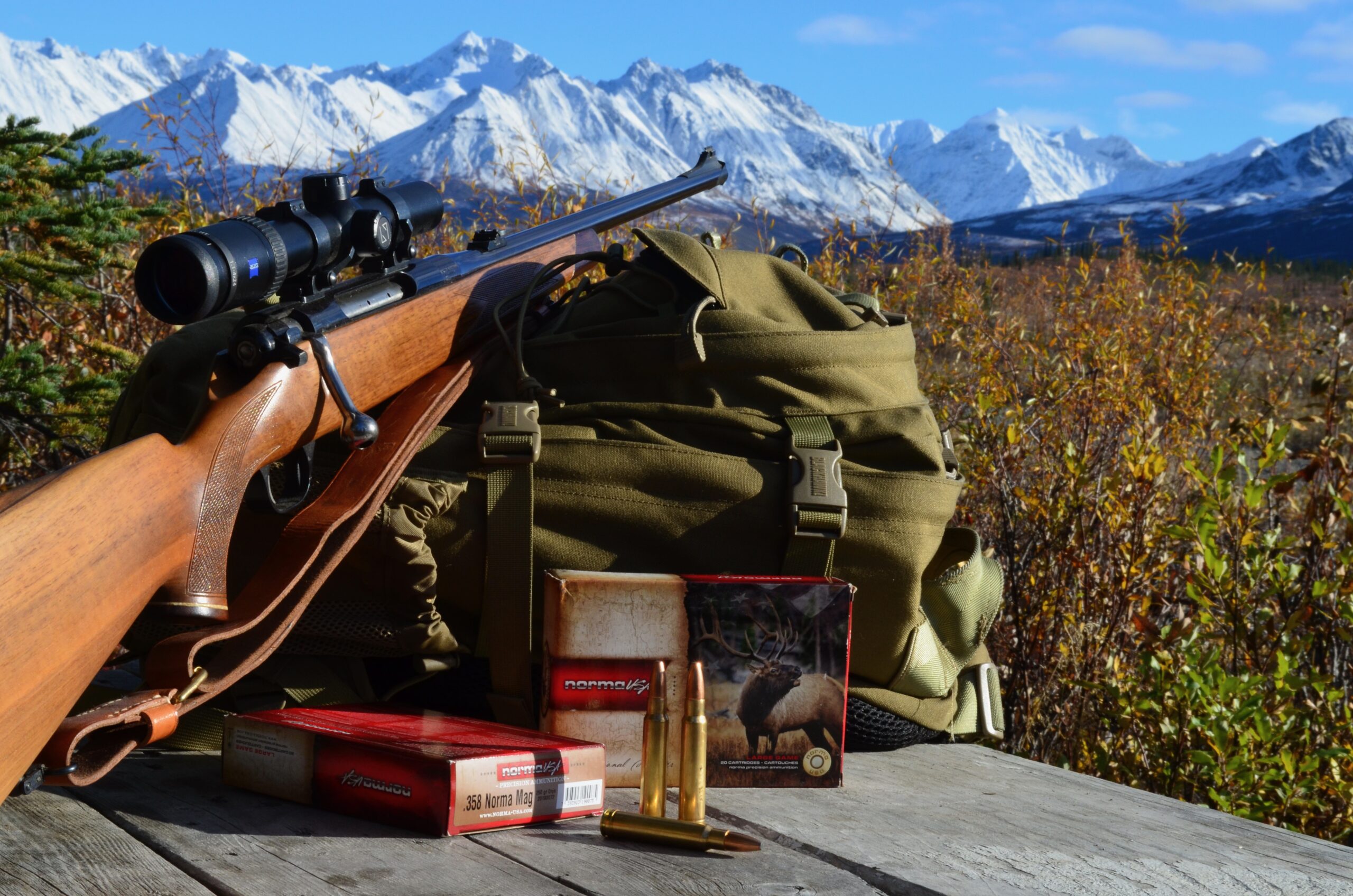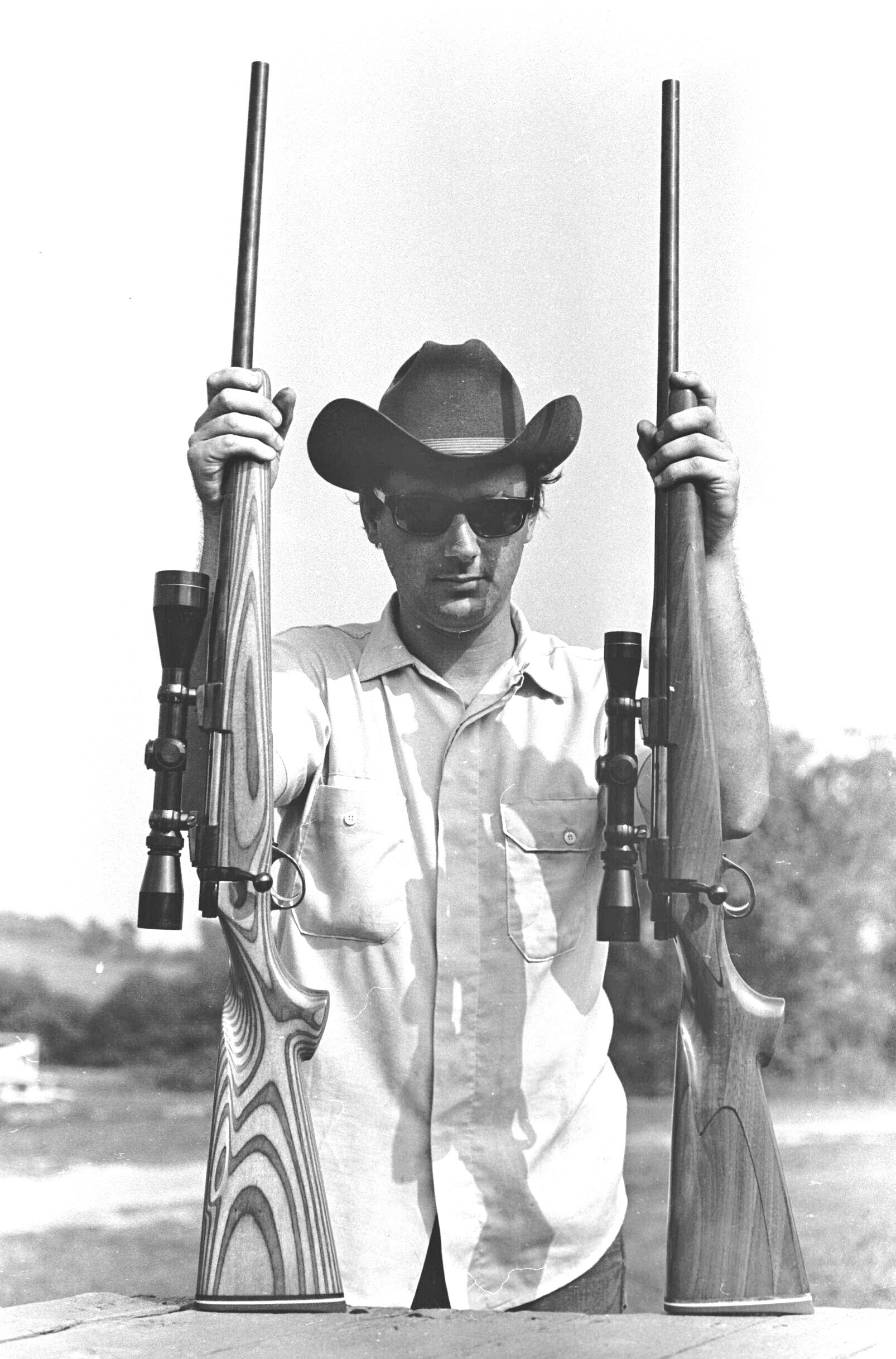By Jon R. Sundra
It had to happen. I’m talking about the new 7mm Precision Rifle Cartridge, or PRC, from Hornady, the folks who have introduced more innovative cartridges over the last two decades than any other ammunition manufacturer.
I say it had to happen simply because there’s a 6.5 PRC and a 300 PRC, and to not have a cartridge of similar technical advancement in a caliber that is rapidly approaching the .30 in terms of popularity, didn’t make sense. Besides, a .044-inch gap in the caliber ladder is a big one in any cartridge family. The 7mm at .284 falls smack in the middle.
Touted as being “a 21st Century 7mm magnum,” the PRC is based on a necked-down and shortened 300 PRC case, which in turn is a necked-down 375 Ruger. Whereas the .300 PRC requires a magnum-length action capable of handling cartridges of 3.70 inches COL (Cartridge Overall Length), the new 7mm version will fit a standard .30-06-length action (3.340 inches COL).
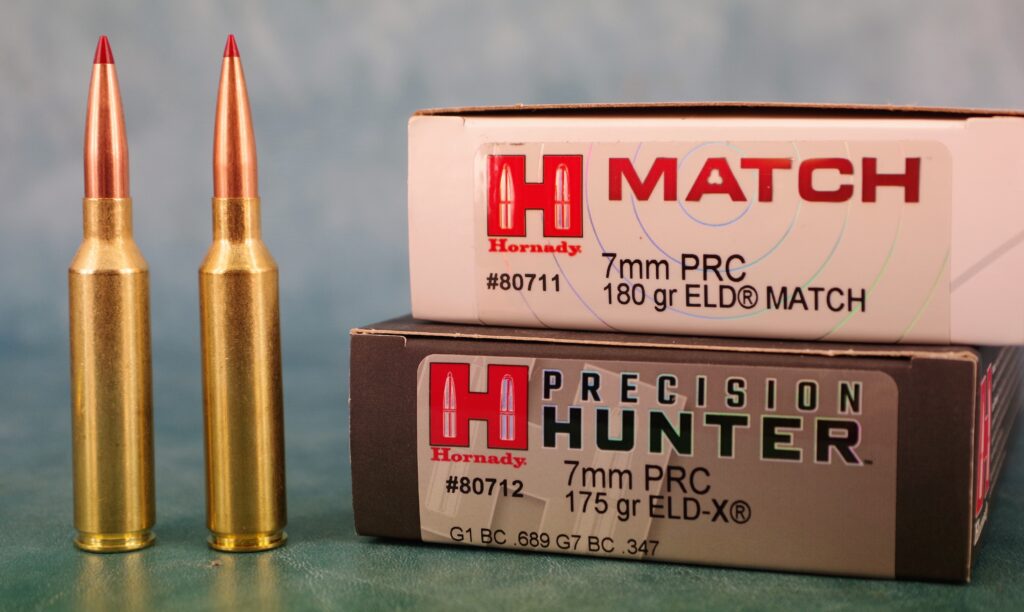
In other words, any action with a belted magnum rim diameter (bolt face) of .532 inch that can digest a 7mm Rem. Magnum or a .300 Win. Magnum can be re-barreled to the 7mm PRC. Not that re-barreling would be necessary, for by the time you read this just about every rifle manufacturer, large and small, will be chambering for this cartridge or plans to.
This newest member of the PRC family embodies all the tenets of modern cartridge design that was first seen on a commercial scale in 2008 with the 6.5 Creedmoor. It’s not that any tectonic advancements were made with the Creed, but enough little things were advanced here and there that resulted in a more efficient cartridge.
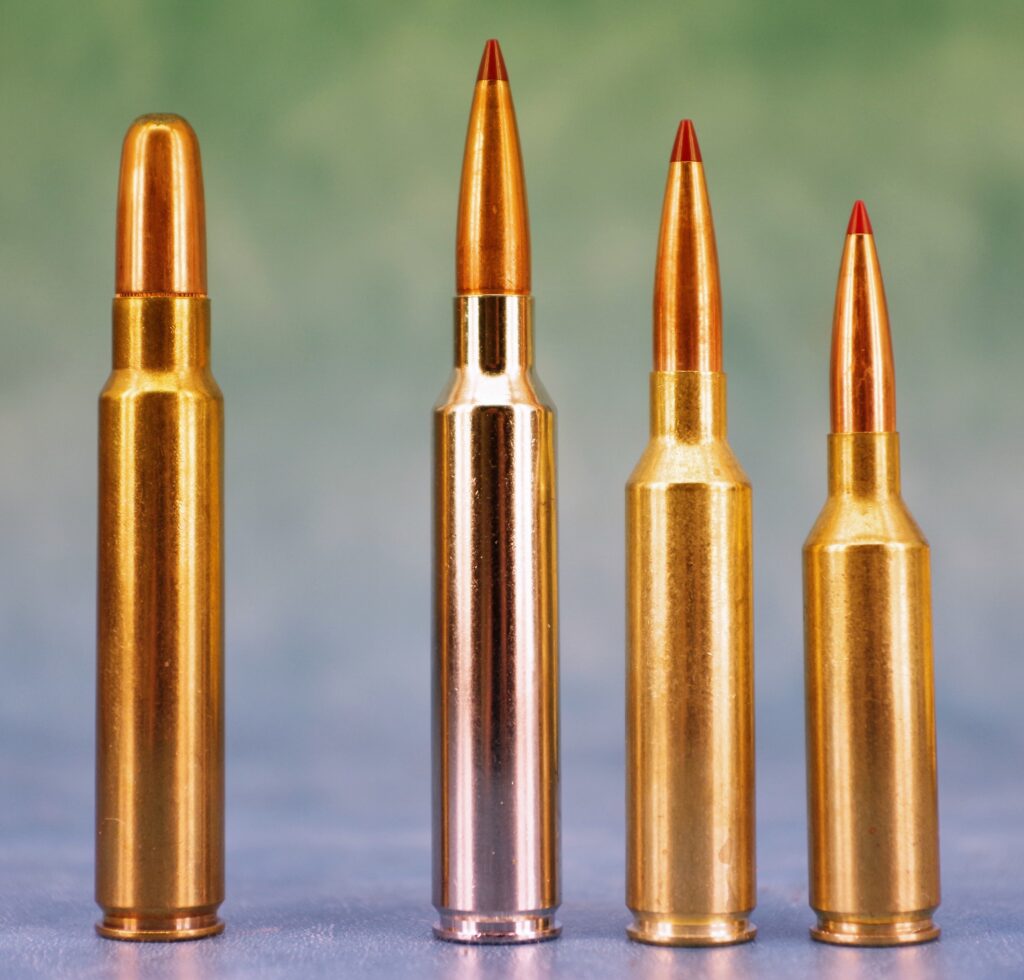
Some were just common sense — like seating bullets farther out so they infringed less on usable powder space; and getting rid of the belt, a vestigial feature at best, and one that can cause resizing and headspacing problems for handloaders.
Cartridge cases that were shorter and fatter have proven to burn powder more efficiently, which yielded more uniform velocities and better accuracy. A sharper shoulder angle provided a more positive datum line for headspacing, and longer necks meant more uniform bullet tension and better bullet/bore alignment which minimized yaw as a bullet enters the rifling.
To maximize volume, body taper is reduced to plus or minus .015-inch from case head to shoulder. But perhaps the most seminal characteristic of the “modern cartridge” is that it launches heavier, longer and more aerodynamic bullets that require faster barrel twist rates to stabilize. All the aforementioned characteristics are incorporated in the PRC family.
So, what can the 7mm PRC do that other .28s can’t?
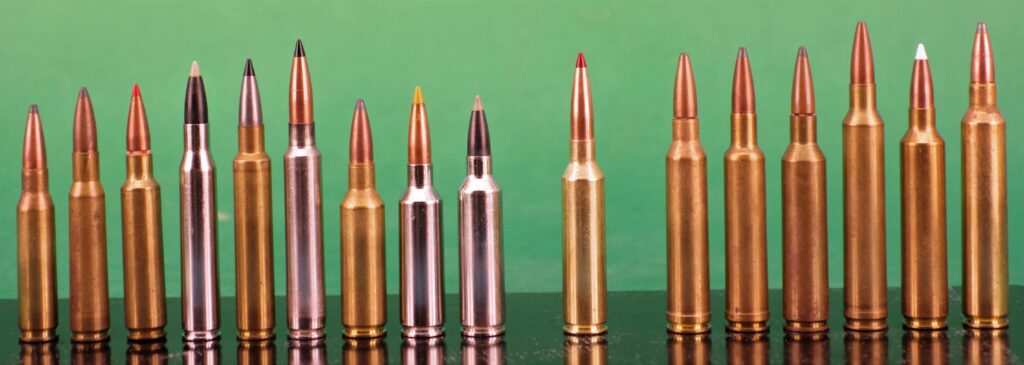
Well, to find out, we have to look at the entire 7mm lineup and see what cartridge is closest to the PRC in terms of case capacity, for that’s always the bottom line when comparing a given cartridge’s ballistic potential.
Conveniently enough, the iconic 7mm Remington Magnum is the closest in that, by my measurements, it held 82.5 grains of water by weight, filled to the case mouth, while the 7mm PRC held 81.5. I arrived at those figures using new, unfired cases from which I pulled the bullets. The 7 Mag brass was of Winchester manufacture, while the PRC brass was, of course, Hornady’s. With the unfired primers in place, both empty cases weighed exactly the same: 229 grains. Filled with water, the 7 Mag case weighed 312.0 grains, and the PRC case, 310.5 grains.
Looking at the two factory-loaded cartridges side by side, one would assume the 7 Mag’s 160-grain Silvertip bullet is seated more deeply into the case than the PRC’s 175 grain ELD-X, thus infringing more on usable powder space. Now let’s see what happens when we seat the same bullet to factory specs, in this case, the 175 grain ELD-X, to an OCL of 3.30 inches. As can be seen from the accompanying photo, the 7 Mag bullet is seated much deeper into the 7 Mag case than in the PRC bullet in the PRC hull.
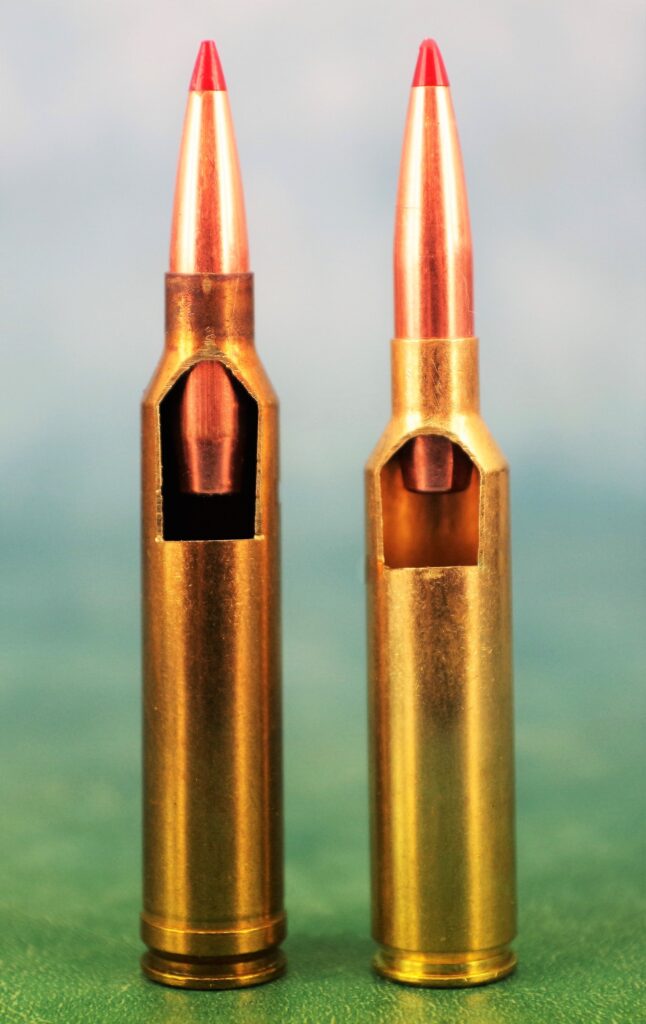
Intuitively, one would assume that, given both cases have virtually the same volume, the PRC case with the much shallower-seated bullet would result in a larger combustion chamber. But believe it or not, that was not quite the case. To determine that, I took those same two empty cases, and with a triangular needle file, filed a lengthwise groove into the inner surface of the neck; this would enable water to escape as I seated the bullets. What water that remained in the case after the bullets were seated to factory depth represented 100 percent loading density in terms of water weight in grains.
As such, the measurement of the water and the PRC round weighed 477.0 grains. The water and the 7 Mag case was 479.0 grains. Subtract the weight of the empty cases (229 grains), and the weight of the bullet (175 grains), and you get a case capacity of 73 grains of water for the PRC, and 75 grains for the 7 Mag.
That small a difference is statistically insignificant because there can be that much difference in volume between makes of brass, so it could easily have gone the other way!
So, what can the 7mm PRC do that the 7mm Rem. Magnum can’t?
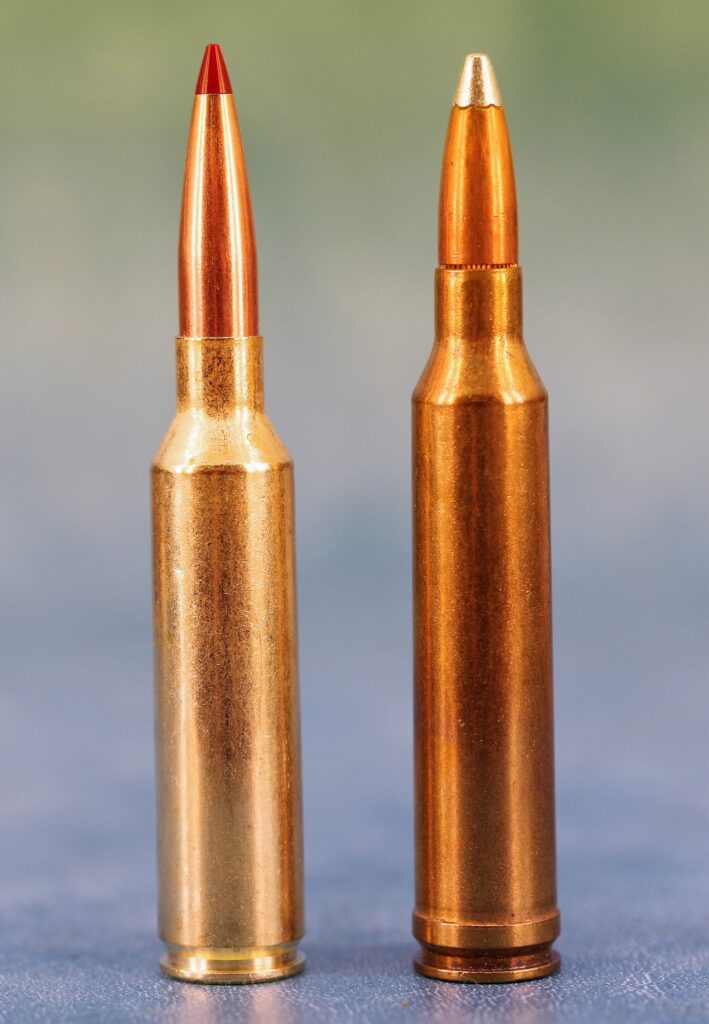
Velocity-wise, absolutely nothing, because identical combustion chambers mean equal velocity potential, all other things equal. What the PRC can do is launch heavier bullets. The 7 Mag specs call for a 1-to-9-inch twist rate. That rate will fully stabilize bullets up to about 170 grains.
But beyond that — like to launch Hornady’s 175 grain ELD-X, 180 grain ELD Match or the 190 grain A-TIP Match — you need the 1-in-8-inch twist, which is the standard for the now 3-member PRC family.
If you own a 7 Mag — or any other 7mm for that matter — and you’re a handloader, you can take advantage of some of the super low-drag bullets now available. Factory ammo users have far fewer options. If you opt for the 7mm PRC, you won’t have to make such compromises in your choice of component bullets or in the factory loadings that will soon proliferate.
Bottom line: If I were shopping for a 7mm rifle, and the recoil level of the 7 Mag/7 PRC is about all you want to deal with, I would definitely go with the more capable PRC.

